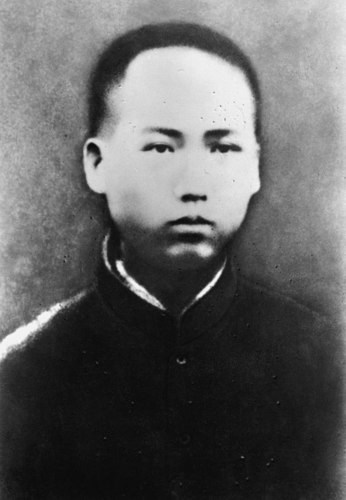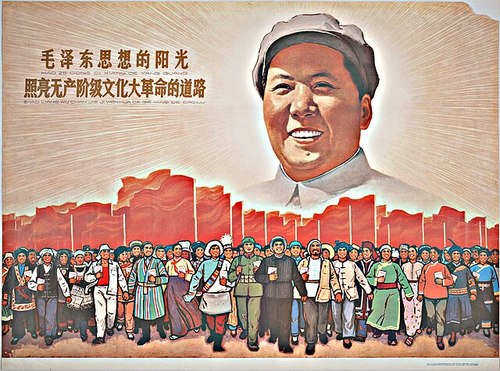Noiser
Mao Zedong: From Rural Rebel to Ruler
Play Real Dictators Mao Zedong Part 1: Peasant’s Son, Communist Rebel
Mao Zedong, the controversial architect of modern China, wielded ruthless power to reshape the nation, leaving a legacy of oppression, economic turmoil, and millions of lives shattered in his brutal quest for communist utopia.

Early Life
Mao Zedong was born on December 26th, 1893, in Shaoshan, China. Most people in this region were peasants, living off food they grew on their own small patch of land. Mao started toiling in his family’s fields at the age of five or six. Growing up on the land in the 1890s and the early 1900s, he experienced firsthand the hardships of rule under the Emperor and the ruthlessness with which the army executed any peasants who rebelled. Those who revolted were rounded up and dragged off by the military or shot where they stood.

Revolution: The Start of Communism
The Qing dynasty had ruled China since the 1600s. As far back as anyone could remember, China has been governed from the top down by sanctified emperors. But by 1911, the world’s most populous nation was in meltdown. The government was failing to keep pace with the times, and poverty was widespread. Across the countryside, peasant farmers had had enough, and a revolution began.
In the 1920s, two political groups with opposing ideologies began to emerge. On one hand, the Nationalists were dedicated to transforming China into a westward-looking capitalist republic. They wanted commerce, enterprise, and international trade. By contrast, the Communists, inspired by Lenin’s revolution, wondered if China could emulate what had happened in the Soviet Union. In 1922, just one year after its official inception, Mao joined the fledgling Chinese Communist Party.
Civil War raged for 22 years between the Nationalists and the Communists. At the same time, Japanese forces tried to invade. The Nationalists were battling on two fronts. Mao saw this as the perfect time to try to take the government down, but his attempted coup failed. The Communists were forced to flee into the mountains with minimal supplies of food and water. However, Mao survived and, at 42 years old, achieved his long-held aim of being appointed Leader of the Chinese Communist Party.
Leader
As the newly anointed Leader of the Communist Party of China, Mao Zedong based himself in Yan’an, a bombed-out mountain town in eastern China. This was to be a pilot town—a test case for Communist ideas and programs that, if successful, would one day be expanded across the entire Chinese nation. Mao seized the land around Yan’an from those who owned it. Then he redistributed it under the equal control of farmers. This policy was called The Land Reform Movement.
At Yan’an, Mao did away with a traditional Communist idea—he eradicated the principle of absolute equality. Instead, Mao wanted to construct a social hierarchy with himself at the top.
Famously, he said, “All power grows out of the barrel of a gun.” Mao was convinced that politics had to be violent.
Dr. Michael Lynch, author of 'Mao'
Mao’s ranks grew. Emboldened by victories and bolstered by arms provided by Stalin, Mao's three million-strong army marched from Yan’an across the Chinese landmass. By 1949, the Nationalists lacked both the public support and the will to fight. Their leader, General Chiang Kai Shek, resigned. His departure left the door to power wide open for one man and one man alone. Just days later, on October 1st, 1949, Mao declared himself Supreme Leader of China’s 600 million people in front of a crowd at Tiananmen Square.

The Great Leap Forward
Mao planned to modernise China’s economy by buying ready-made factories and military technology from his Russian allies. He would pay for them with grain grown by China's peasants. To do that, he needed to have complete control over grain production.
Mao started by outlawing private enterprise in the countryside. The state would now own every scrap of grain. Those who persisted in private farming were labelled ‘counter-revolutionaries’. They were punished in ceremonies called ‘struggle sessions. In these episodes of ritual humiliation, the guilty were put on trial by the mob. Harangued by officials and members of the public alike, they were beaten and abused until they confessed to crimes they may or may not have committed.
Instead of farming their own produce, farmers toiled the land in exchange for food rations. The wheat was taken from the fields, loaded into troughs, and carted away. Chairman Mao imposed impossibly high production targets on these new collective farms. The peasants were told they wouldn’t receive their food rations if they didn't hit their quotas. Government inspectors were candid about denying food to the sick and weak. Starving them hastened their deaths, and more deaths meant fewer mouths to feed. However, the initiative resulted in widespread famine, economic instability, and social upheaval, causing millions of deaths due to starvation and mismanagement. In all, it’s thought that 14 million people died during this period, though most scholars agree that this is a significant underestimate. The Great Leap Forward ultimately proved to be a disastrous policy.

The Cultural Revolution
Mao Zedong's Cultural Revolution, initiated in 1966, was a tumultuous movement aimed at purging remnants of capitalist and traditional elements from Chinese society. Classical music, literature, sculpture, art, and many other creative pastimes were banned. The revolution sought to reassert Mao's authority and revive revolutionary fervour among the population. The movement mobilised millions of young Red Guards (indoctrinated teens) to target intellectuals, teachers, party officials, and anyone perceived as a threat to the communist regime, resulting in widespread persecution, violence, and the destruction of cultural artefacts. Schools and universities were shut down, and education was replaced with ideological indoctrination. The Cultural Revolution led to chaos, economic disruption, and social disintegration.

The End of a Reign
In the early 1970s, as he approached his 80th birthday, Mao’s health began to deteriorate. In 1974, Mao was silenced by a degenerative condition. It made him unintelligible to all but his nurse. Despite his feebleness, the Communist Party Chairman remained untouchable. The fearful discipline he had instilled in his party and his populace meant that he was still unquestionably number one, even though he had become incapable of leading the country. In 1976, the elderly Chairman suffered three heart attacks. It was hardly surprising—he'd been a chain smoker for much of his life. A few days after the third cardiac arrest, on September 9th, 1976, Mao Zedong, Supreme Leader of China, died after 27 years in power.
Various estimates are still being produced about the number of deaths in Mao’s time. Customarily, we say that in the league tables of horror, he comes top.
Dr Michael Lynch, author of 'Mao'